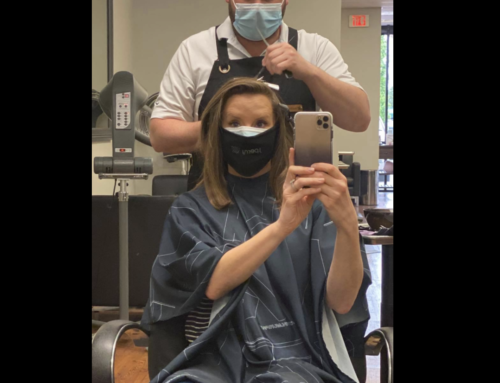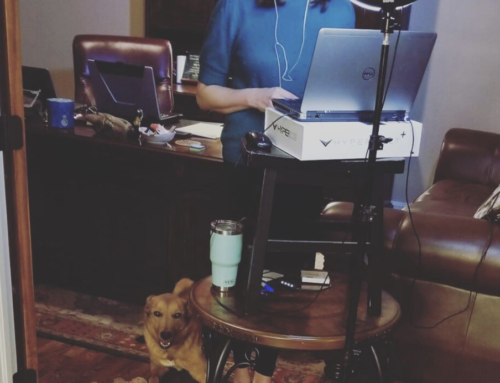
The Greenwood Rising Black Wall Street History Center is one of those places that will move you. As you walk toward the entry doors, a quote on an outside wall reads, “Not everything that is faced can be changed, but nothing can be changed until it is faced.” – James Baldwin.
It opened in Tulsa, Oklahoma, in August of 2020. Interim Director Phil Armstrong says already that more than 41,000 people from 41 different states and four different countries have walked through its doors. Armstrong says it’s a place for “anyone who wants to experience an untold part of American history in a world-class facility that lays the groundwork to explore the journey towards reconciliation.”

Greenwood Rising Interim Director Phil Armstrong
You’ll find the center in the Greenwood District. In the early 20th century, the thriving community here was also known as Black Wall Street. But, the death and destruction of the 1921 Tulsa Race Massacre left the area in ashes. The museum helps bring the dark secrets of that past to light and opens hearts and minds to future possibilities.
Armstrong says, “Greenwood Rising continues to reshape the discussion of what the reflection upon this history is about. This is not a history center or museum about the massacre. It is a history center that chronologically details the amazing lives that Black people were able to live in the Oklahoma territory long before statehood and  before the creation of Black Wall Street. It is the immersive journey through the understanding of the indomitable human spirit that was found among the independent and thriving black towns of Oklahoma that made its way to Tulsa and created Black Wall Street. It details that enduring spirit beyond the hate that was found among the Ku Klux Klan that tried to destroy it but yet rebuilt and thrives yet still today.”
before the creation of Black Wall Street. It is the immersive journey through the understanding of the indomitable human spirit that was found among the independent and thriving black towns of Oklahoma that made its way to Tulsa and created Black Wall Street. It details that enduring spirit beyond the hate that was found among the Ku Klux Klan that tried to destroy it but yet rebuilt and thrives yet still today.”
The rooms and spaces guide you through a timeline of then and now and ask you to look back and look at what’s ahead.
 Armstrong says when it comes to moving moments, he’s seen that stand out to him; there are plenty. “Early on in our opening, when various groups would come through, and we would see people of different ages and backgrounds stand with tears in their eyes and begin to have a conversation with strangers about their backgrounds and about this history that motivated them to make positive personal changes in how they relate to other people. I personally watched a middle-aged white female and a middle-aged black female standing in one of our exhibit spaces and just begin to hug each other and cry together. Afterward, they exchanged information and began a new friendship.”
Armstrong says when it comes to moving moments, he’s seen that stand out to him; there are plenty. “Early on in our opening, when various groups would come through, and we would see people of different ages and backgrounds stand with tears in their eyes and begin to have a conversation with strangers about their backgrounds and about this history that motivated them to make positive personal changes in how they relate to other people. I personally watched a middle-aged white female and a middle-aged black female standing in one of our exhibit spaces and just begin to hug each other and cry together. Afterward, they exchanged information and began a new friendship.”
Nearby you’ll find the Pathway to Hope.
“It was built as a symbol of re-joining the District that was bifurcated by the intentional urban renewal policies that swept across the country in the 1960s to disband black communities. This history of eminent domain programs of the 1960s and their impact on urban black communities has been researched and studied by the US Department of Transportation and the Oklahoma Department of Transportation. They provided a tremendous amount of support and private philanthropic dollars to make this project happen. The second destruction of Greenwood was more devastating in that it kept the community from rebuilding. It made a permanent mark that is still so tangible today. So the Pathway to Hope provides the history of what eminent domain did to this community and many others during this same time in history.” explains Armstrong.

 When you plan your visit, give yourself plenty of time, “Be prepared to spend 2 to 3 hours if they want to take their own self-guided tour! There is such a plethora of history about black Americans in Oklahoma you are quite literally overwhelmed by how much was left out of the history books. There is so much more beyond the teaching and the truth telling of the massacre. It is incredible history. It is Oklahoma history. More importantly, it is American history!”
When you plan your visit, give yourself plenty of time, “Be prepared to spend 2 to 3 hours if they want to take their own self-guided tour! There is such a plethora of history about black Americans in Oklahoma you are quite literally overwhelmed by how much was left out of the history books. There is so much more beyond the teaching and the truth telling of the massacre. It is incredible history. It is Oklahoma history. More importantly, it is American history!”
No matter how long or short your visit, he hopes you remember “that in spite of a horrific, tragic racial past, Tulsa, Oklahoma can become a model for how communities all across this country can face difficult history together and move forward in a bond of establishing trust and love to create a better future.”






Leave A Comment